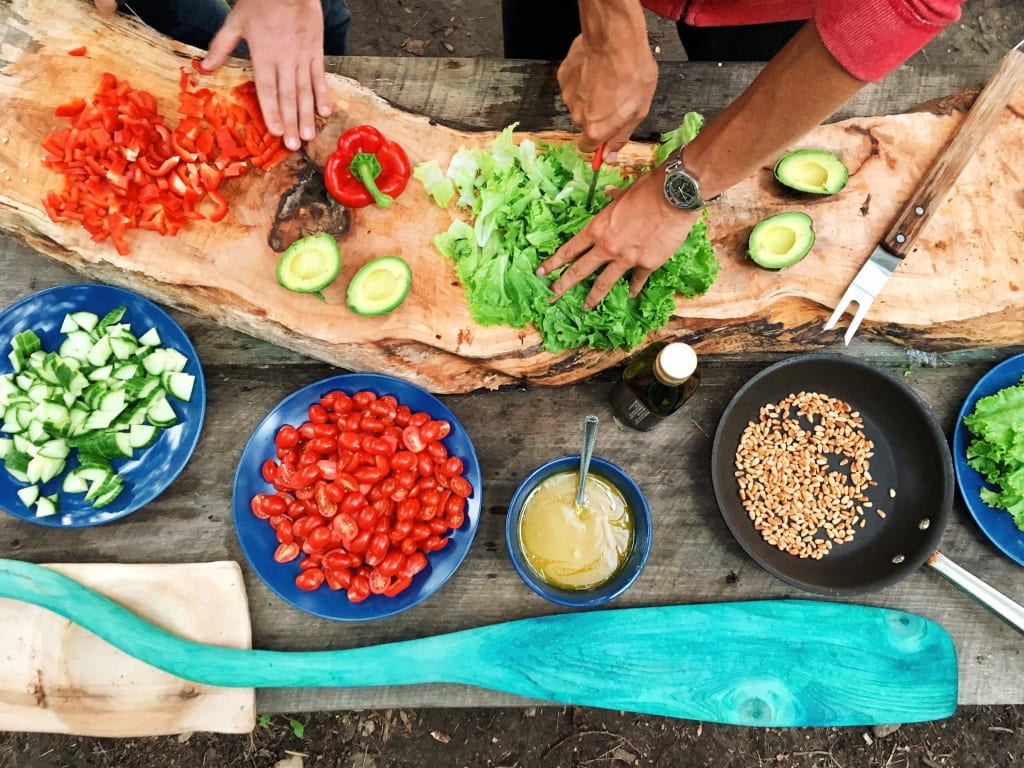Did You Know - 100 Years Ago
Today, June 6, 1923 - Food Preparation

In an era before widespread refrigeration, food preservation techniques played a vital role in ensuring food availability and minimizing waste. On June 6, 1923, various methods of food preservation, such as canning, pickling, and smoking, were widely practiced. Home canning was a common activity, allowing families to preserve fruits, vegetables, and jams for consumption during the off-season. These preservation methods allowed people to enjoy the flavors of summer fruits and vegetables throughout the year and helped to extend the shelf life of perishable items.
On June 6, 1923, food preservation techniques were at the forefront of households' efforts to ensure a steady food supply and minimize waste. In an era when refrigeration was not yet a widespread luxury, various methods of preserving food played a vital role in extending its shelf life and preserving its flavors.
Home canning was a popular activity during this time, allowing families to capture the bountiful harvest of fruits and vegetables during the peak season and enjoy them throughout the year. Canning involved carefully sealing fresh produce in glass jars to create a vacuum and prevent spoilage. Fruits like peaches, berries, and apples were transformed into vibrant jams, jellies, and preserves, preserving their natural sweetness. Vegetables, such as tomatoes, green beans, and corn, were canned to provide nourishing and flavorful additions to meals even in the winter months.
The canning process was a labor of love that required meticulous preparation. Families would gather together, often in the warmth of the summer kitchen, to wash, peel, chop, and prepare the fruits and vegetables. The jars would be sterilized, filled with the carefully prepared produce, and processed in boiling water or a pressure canner to ensure proper preservation. The sound of the jars sealing as they cooled was a satisfying confirmation that the food inside was protected from spoilage.
Pickling was another prevalent method of food preservation. Vegetables such as cucumbers, beets, and cabbage were transformed into tangy, flavorful pickles through the process of brining or fermenting. These pickles provided a welcome burst of flavor and texture, adding a refreshing crunch to meals year-round. Pickling not only extended the shelf life of vegetables but also enhanced their taste profiles, infusing them with spices, vinegar, and other flavorings.
Smoking was yet another technique employed to preserve and enhance the flavor of meats and fish. Smoked meats, such as ham, bacon, and sausages, were prepared by exposing them to the aromatic smoke of hardwood fires. This process not only imparted a distinctive smoky flavor but also helped to inhibit the growth of bacteria, extending the meat's shelf life. Smoked fish, such as salmon or herring, was a delicacy enjoyed by many, with the smoking process adding a rich, savory dimension to their taste.
These food preservation methods allowed families to make the most of the seasonal abundance, preventing spoilage and ensuring a varied diet throughout the year. By preserving the flavors of fruits, vegetables, meats, and fish, households could savor the tastes of summer, even in the depths of winter. The art of food preservation was passed down through generations, creating a sense of continuity and resourcefulness in the kitchen.
In addition to the practical benefits, food preservation also fostered a sense of community and sharing. Neighbors would come together for canning parties, exchanging recipes and tips while working side by side to preserve the harvest. Surplus produce would be shared, ensuring that no food went to waste and that everyone had access to preserved goods during leaner times.
The food preservation techniques of canning, pickling, and smoking practiced on June 6, 1923, demonstrated the resourcefulness and ingenuity of individuals in making the most of their food resources. These methods allowed families to enjoy the flavors of seasonal produce year-round, minimizing waste, and providing a sense of security in times when food availability was not guaranteed. Today, while modern refrigeration has made preservation easier, these traditional methods continue to be cherished for their historical significance and the preservation of culinary traditions.
Food preservation techniques were implemented in some European countries during the early 20th century:
1. Italy:
In Italy, a country renowned for its culinary traditions, food preservation techniques played a crucial role in extending the shelf life of regional delicacies. Italian households practiced various methods such as canning, drying, and fermenting. Tomatoes were canned in abundance to create flavorful sauces like passata and tomato paste, which formed the foundation of many traditional dishes. Fruits such as figs and grapes were dried to make sweet treats, while olives were cured and preserved in brine. These techniques allowed Italians to savor the flavors of their beloved cuisine throughout the year.
2. France:
In France, the art of food preservation was embraced with gusto. Canning, or "conserves," was a popular method employed to preserve seasonal fruits and vegetables. Jams and jellies made from strawberries, cherries, and other fruits were stored in glass jars, ready to be enjoyed during colder months. French households also excelled in pickling vegetables, creating an array of vibrant and tangy cornichons, pickled onions, and sauerkraut. Additionally, smoked meats, such as sausages and hams, were prepared using traditional methods, infusing them with rich flavors.
3. Germany:
In Germany, food preservation techniques were integral to ensuring a stable food supply throughout the year. Home canning, known as "Einwecken," was widely practiced, allowing families to preserve an assortment of fruits, vegetables, and jams. Traditional German sauerkraut, made by fermenting finely shredded cabbage, was a staple that added tanginess to meals. The country's love for pickled cucumbers, known as "Gurken," was evident in every household. Additionally, German butchers skillfully smoked sausages and meats, contributing to the country's renowned charcuterie tradition.
4. Spain:
In Spain, food preservation techniques were deeply rooted in the country's rich culinary heritage. Traditional preservation methods, such as "escabeche" and "adobo," were employed to preserve fish and meat. Fish, such as sardines and anchovies, were marinated in vinegar, olive oil, and spices to create deliciously tangy escabeche. Meat, particularly pork, was cured and preserved to make the famous Spanish ham, "jamón." Additionally, sun-drying was a prevalent method used for preserving tomatoes, peppers, and fruits, which were later rehydrated and incorporated into traditional dishes.
5. United Kingdom:
In the United Kingdom, food preservation techniques were indispensable in a country where seasons dictated food availability. Canning was widely practiced, with households preserving fruits, vegetables, and jams for year-round consumption. British households were particularly adept at making fruit preserves and chutneys, using local produce such as apples, plums, and blackberries. The tradition of smoking meats, especially fish like herring and kippers, was also prevalent, creating smoky flavors that complemented hearty British breakfasts.
These implementation examples highlight how food preservation techniques were utilized in different European countries, adapting to regional culinary traditions and ingredients. The preservation methods employed in these countries not only extended the shelf life of food but also allowed for the celebration of diverse flavors and ensured a steady food supply throughout the year. Today, while modern refrigeration has become commonplace, these traditional preservation techniques continue to be appreciated for their historical significance and the unique flavors they impart to culinary creations.
About the Creator
Enjoyed the story? Support the Creator.
Subscribe for free to receive all their stories in your feed. You could also pledge your support or give them a one-off tip, letting them know you appreciate their work.





Comments
Pabalatak is not accepting comments at the moment
Want to show your support? Send them a one-off tip.